It is that time of year when farmyards and fields are a hive of activity. It is one of the busiest periods and unfortunately the risk of accidents increases dramatically when working against the clock and the weather. While easier said than done, the key to avoiding many accidents on the farm is to be as organised as possible. Here we highlight a number of safety risks related to beef breeding, but also for many other tasks taking place on farms at present.
Beware of the bull
You should never let your guard down when handling a bull. This statement gains in importance during the breeding season, with bulls regularly unsettled and protective of cows during breeding. Keep disruption to a minimum and avoid herding on foot, opting instead to check cows and calves with a tractor, jeep or van. If animals do need to be collected or handled, ensure help is available and take the necessary precautions to cut down on risks.
Every bull should be ringed and ideally have a chain applied during breeding. A bull should never be ringed by its owner and, where at all possible, it should be ringed before coming on to the farm it will be working on. If a ring needs to be replaced, allow your vet to do so, ensuring that facilities are available to cut down on stress or agitation. A period of a month is generally recommended between applying a ring and using it to lead an animal.
Safety during AI
On the face of it, artificially inseminating cows or heifers would seem to pose a lower risk than running a stock bull. However, there are still concerns that should be addressed. Many animals become excited while in heat and as a result can display non-typical behaviour. Problems manifest themselves most when cows are separated from their calves for inseminating or animals are taken from their group and left on their own in a pen for an AI technician to arrive. At a minimum, a cow should be grouped with her calf where she is being separated, especially for any length of time, and animals should not be left isolated on their own in a holding pen or crush. The yard and facilities should be sufficient to adequately herd and restrain an animal in the head gate. Where DIY AI is being carried out, the flask should be stored in a safe lockable area where any young children entering the yard cannot gain access.
Field work safety risks
If you are planning on spreading fertiliser, reseeding, etc this spring, try to have spray, fertiliser and seed in the yard well in advance.
This will help cut out last-minute panic and stress of trying to source inputs. Another way to ensure work is not rushed is to contact your contractor well in advance of the task at hand. Below we have some risks and tips to help make you aware of the best ways to avoid accidents or injury in the fields during the busy spring period.
Picture one
Chemicals such as sprays pose a risk by different routes including inhalation, ingestion and absorption.
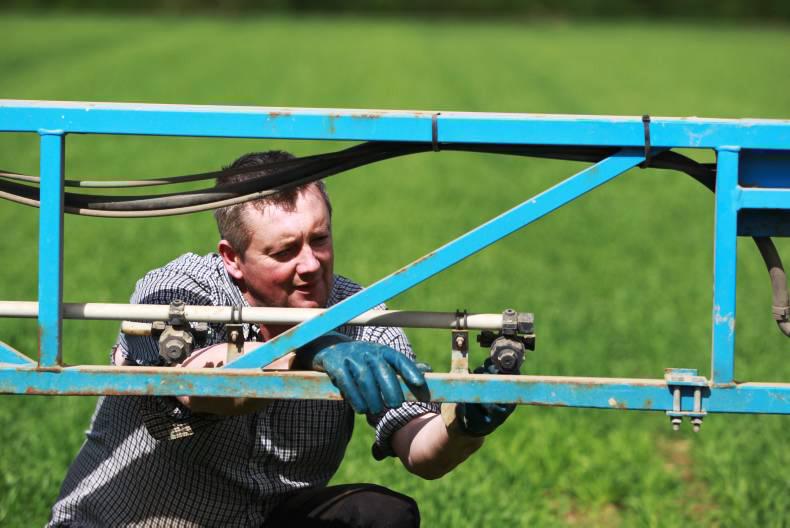
Picture 1
First of all, remember that all chemicals must be kept in locked stores and the containers must be labelled correctly.
When working with chemicals and the sprayer, use protective clothing recommended by the manufacturer. When attaching some sprayers it might be worth attaching the PTO before the lift arms. This is because mounted sprayers are so close to the back end of a tractor and it can be dangerous and difficult to attach the PTO once the sprayer is mounted.
On a quiet day, put the sprayer on the tractor and make sure it is working correctly by adding some clean water and running the machine. By lifting the sprayer high and opening up the booms you will be able to see if all the nozzles are working correctly from the tractor cab.
Through servicing and advance preparations you will reduce the chances of a breakdown and a rush to get work done. Remember, only registered professional users can apply spray authorised for professional use.
Picture two
During reseeding and land drainage there is a lot of machinery working on the farm. Potential risks are high for both adults and children.
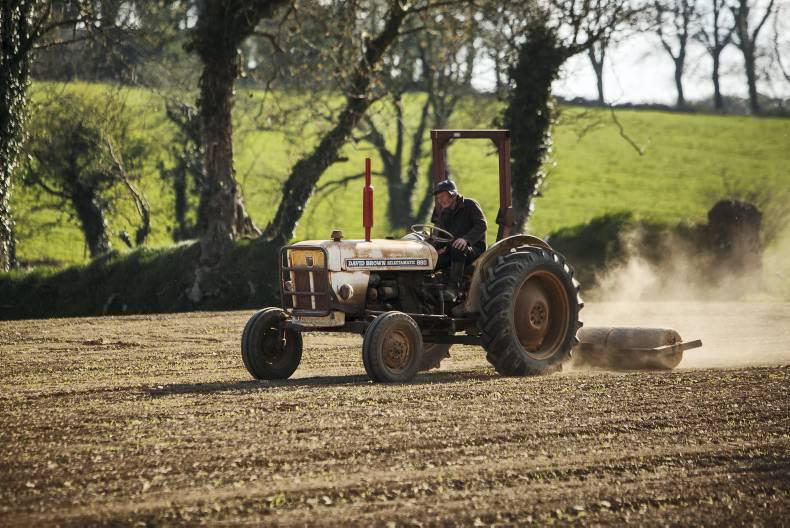
Picture 2
Farmers should always remind children of the risks and never leave them unaccompanied, especially younger children. Some farmers in the past used older children to drive tractors when picking stones or rolling but this is totally inappropriate now and farmers should realise the dangers.
Children, no matter how competent and confident they may seem, are not mature or experienced enough to drive agricultural machinery and should not be given the responsibility.
As always, the machinery you use should have all safety guards and devices fitted and the hydraulic system should be functioning correctly.
Pictures three, four and five
Reseeding time is associated with a lot of manual handling. The best way to minimise the risk is to try and eliminate it altogether. Recently on the labour-saving tips page, we featured a special frame designed for moving large fertiliser bags safely on the farm (see picture three). This frame allows the farmer to transport fertiliser safely from the cab of his tractor, cutting out the physicality of handling bags. Other farmers take advantage of a contractor service to reduce workload.
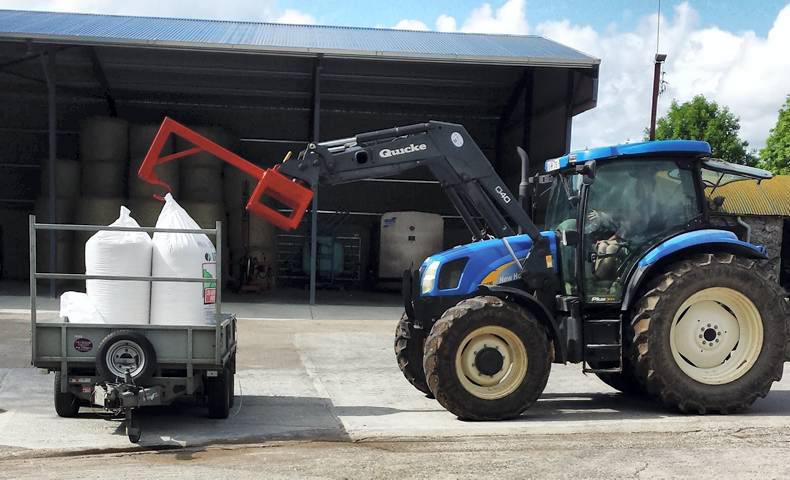
Picture 3
If spreading fertiliser with individual bags, remember to protect your back. Lifting heavy loads results in arthritis of joints, particularly hip and knee joints. Damage is also caused to tendons, ligaments and muscles. Injuries can result from manual handling due to the work itself, the load, the work environment, or the person’s ability.
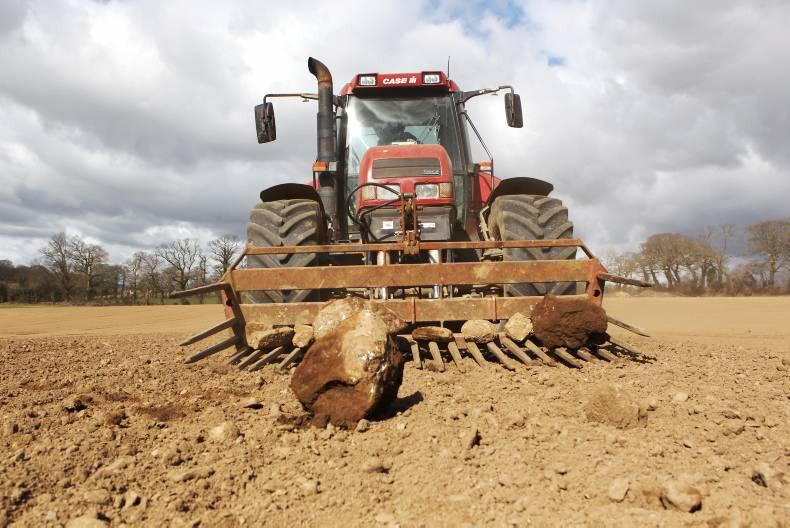
Picture 4
Most will agree that stone picking is a back-breaking task. What may seem like a small stone at the surface could well be a very large stone wedged in the earth that has no intention of coming up without a fight. Rather than spending half the day digging around the stone and trying to lift it out of the ground manually, a mechanical solution should be sought.
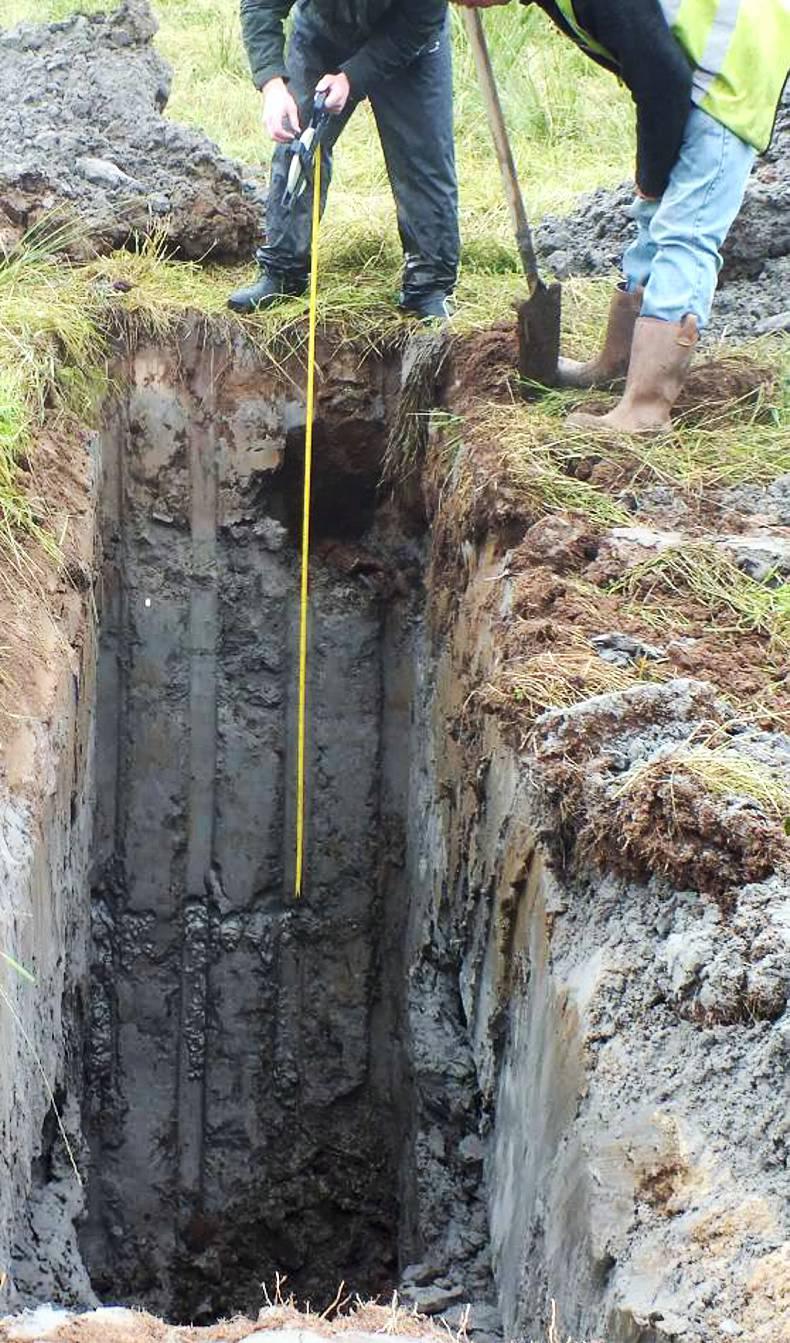
Picture 5
Some contractors have special digger bucket attachments designed for stone picking while the front loader of the tractor is useful too, but some farmers are reluctant to use it. Be careful also to use caution if digging test pits for drainage jobs.
To read the full Beef Breeding Focus Supplement click here






 This is a subscriber-only article
This is a subscriber-only article
















SHARING OPTIONS: